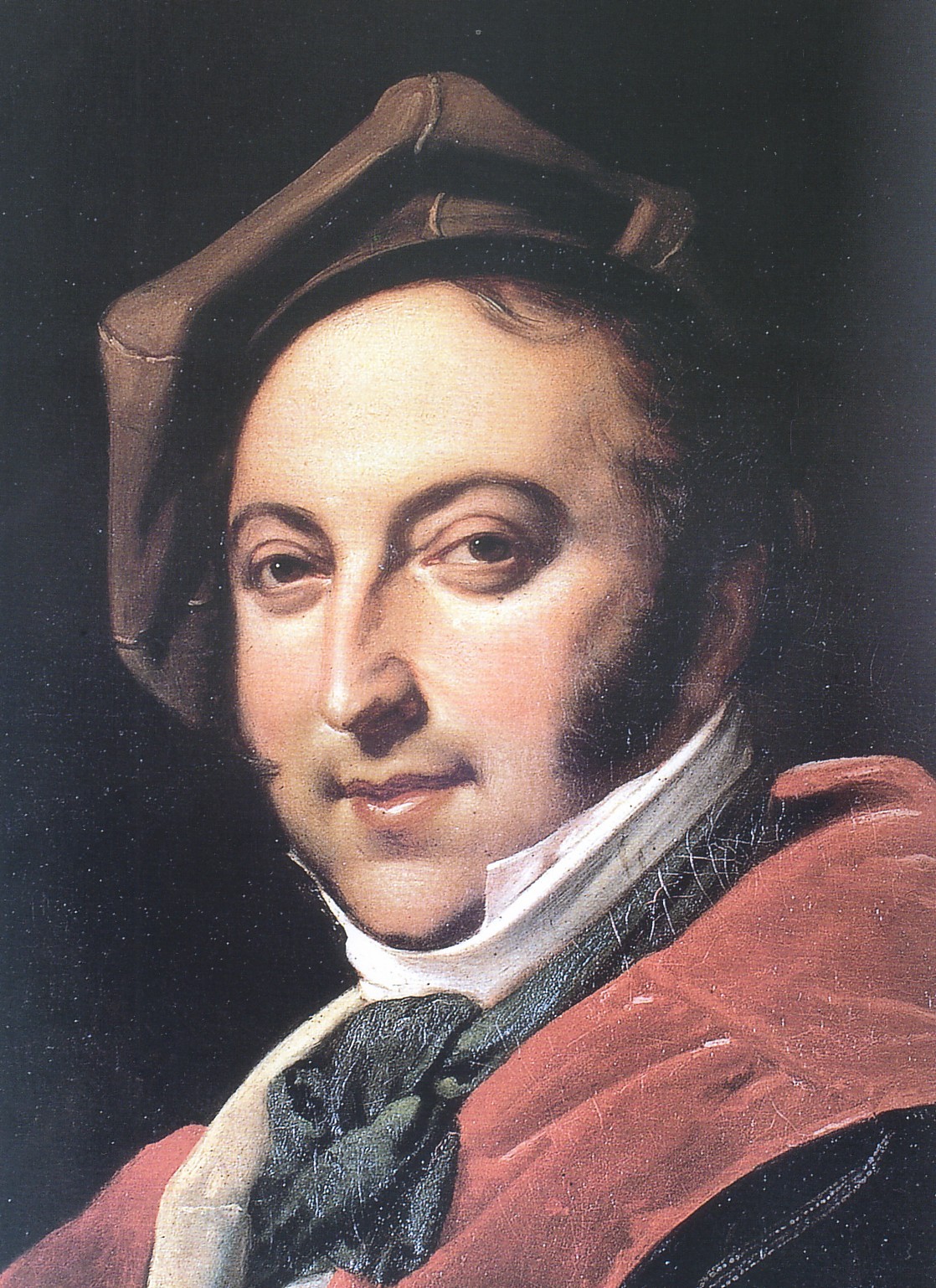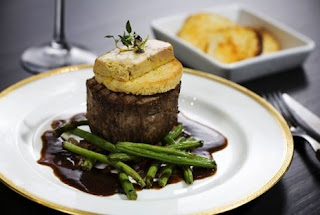a la Rossini
 |
| Gioachino Rossini (1792 – 1868) |
Gioachino Rossini (or, Il Gastronomo Musicale)
To opera lovers, Gioachino Rossini is remembered as the father of bel canto whose wit and personality equaled his effervescent writing style, catapulting him to stardom across Europe. To many, he’s the guy who gave us the theme song of The Lone Ranger:
and the background music for the famous Bugs Bunny and Elmer Fudd cartoon, Rabbit of Seville:
But if Rossini had chosen a different path, he could just as easily have been remembered as one of the greatest gastronomes of his lifetime.
It is no secret Rossini was a connoisseur of haute cuisine. He once said: “Appetite is for the stomach what love is for the heart. The stomach is the conductor, who rules the grand orchestra of our passion. The bassoon or the piccolo, grumbling its discontent or shrilling its longing, personify the empty stomach. Eating, loving, singing, and digesting are, in truth, the four acts of the comic opera known as life.”
Evidence of his love for a well-prepared meal is not relegated to pithy quotes; many references to food can be found in Rossini’s music. Don Magnifico’s second act aria in La Cenerentola (Cinderella), “Sia qualunque delle figlie” mentions sturgeons, marinades, cakes, buns, vanilla, and many other culinary treasures, and “Di tanti palpiti” from Tancredi was dubbed the “rice aria,” as Rossini composed it whilst cooking a batch of risotto. One cannot help but think of the Pappataci scene in L’italiana in Algieri (The Italian Girl in Algiers), as Mustafà is ordered to eat, drink, and sleep (we can guess which word Rossini would have underscored thrice). Additionally, a collection of somewhat ironic piano pieces, including an almond minuet and a theme and variation on anchovies.
Rossini was one of the most famous musicians in all of Europe, and to say he was “well-fed” is an understatement. As director of the Théâtre Italien in Paris from 1824-1836, Rossini’s position permitted him access to the highest echelons of the city’s culinary culture, but it was his status as a true gourmand that caused the finest Parisian establishments to compete for his patronage. Tables in all the best restaurants were reserved exclusively for Rossini, and the composer would be ceremonially ushered to his table after greeting everyone from the restaurant’s maître d’ to its lowliest cook.
Parisian chefs welcomed the chance to cook for “The Maestro” and created numerous dishes in an effort to both honor and impress him. Numerous sources tell us that Rossini had a particular favorite among them: Antonin Carême, who was known during his time as “The King of Chefs, and the Chef of Kings.” Carême once claimed, “Rossini is the only one who truly understands me.” Indeed, the sentiment appears to have been shared. Rossini composed two piano collections devoted to food: The Four Hors D’oeuvres (or Radishes, Anchovies, Gherkins and Butter) and The Four Beggars, (or Dry Figs, Almonds, Raisins, and Nuts). Carême reciprocated by creating dishes in Rossini’s honor, generally incorporating the composer’s favorite foods truffles and pâté de foie gras. Carême’s inspired dishes include Stuffed Turkey a la Rossini, Fillet of Sole a la Rossini; Eggs a la Rossini; and, most famous of all, Tournedos a la Rossini. Reportedly, Rossini could devour more than twenty Tournedos cutlets at a time.
To celebrate the opening night of Guillaume Tell, Rossini was served an apple tart complete with decorative apple and crossbow – a whimsical pastry to match the great composer’s sense of humor. Auguste Escoffier, a contemporary of Carême and equally celebrated French chef in his own right, also dedicated many recipes to Rossini in his book, La guide cuisine.
A dish a la Rossini typically consists of three key ingredients: black truffles, foie gras, and Madeira wine. The quintessential dish, Tournedos Rossini, consists of fillet mignon sautéed in butter, on a crouton with a slice of whole foie gras, topped with black truffles and a Maderia demi-glace.
You can learn more about Rossini, his music, and his love of food at Opera Up Close:The Cinderella Preview on Sunday, April 15, 1-3pm at the Madison Museum of Contemporary Art. And why not indulge yourself by taking a crack at Tournedos Rossini:
Get inspired for Cinderella with Tournedos Rossini! Bon appetit!
Ingredients (serves 6)
· 6 beef fillets
· ⅜ oz butter
· 1 slice fresh fois gras
· 2 slices black truffle
· 1 slice sliced bread
· 1 tablespoon Madeira wine
Preparation
25 minutes preparation + 10 minutes cooking
Tie up the fillet slices with string so that they retain their round shape while cooking: Brown in butter until medium-rare, then remove the string.
Fry in oil and butter the slices of bread; arrange a tournedos on each bread slice, put the foie gras slice on top and garnish with the truffle shavings previously sautéed in butter.
Pour the Madera wine into the meat cooking juices and reduce; drizzle this reduction over the tournedos when ready to serve.
Recipe courtesy of:
http://www.academiabarilla.com/gastronomic-library/historical-figures/pesaro-1792-paris-1868.aspx

